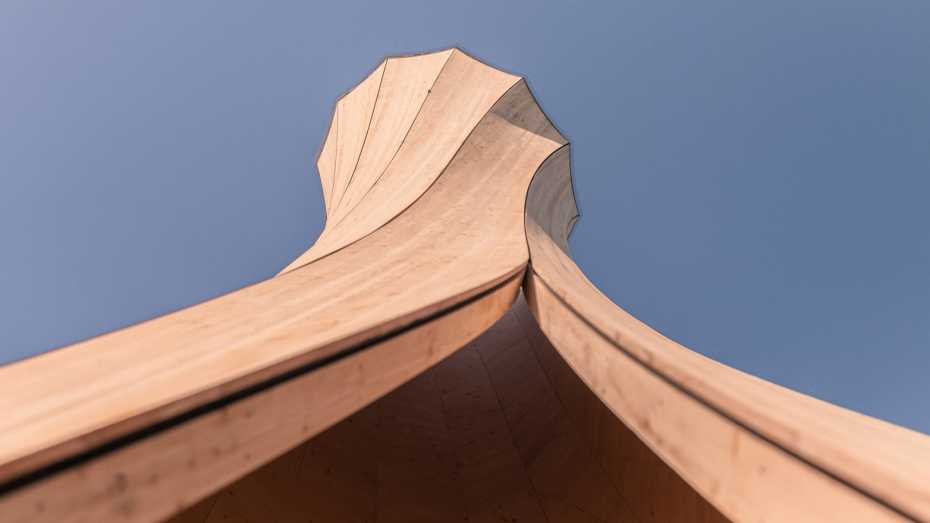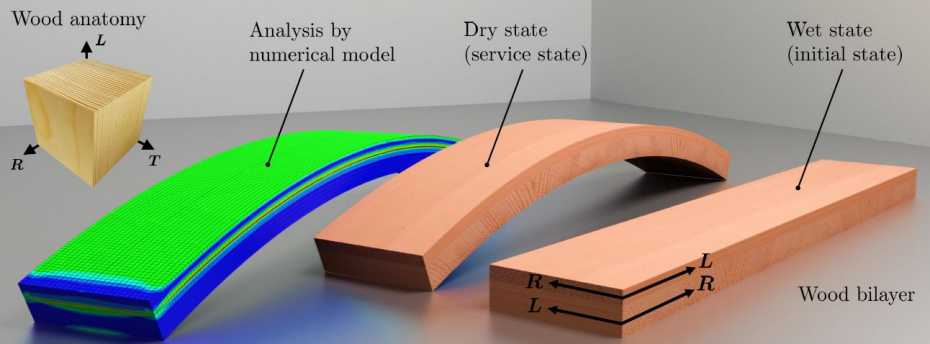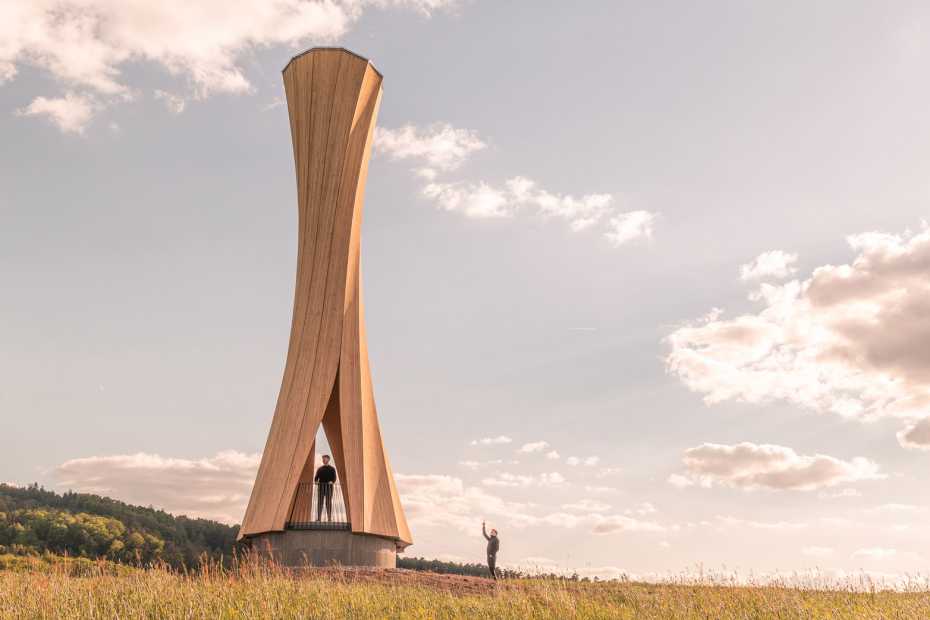Wood is a renewable resource and a popular, sustainable construction material. Complex architectural designs featuring curved or twisted structures, however, pose increasing challenges for the wood construction sector. Reshaping wood currently utilises large machines that consume substantial amounts of energy to press the building elements into the required shapes.
In a study recently published in Science Advances, researchers from ETH Zurich and Empa presented a process that has the potential to replace these inefficient mechanical reshaping processes. In collaboration with colleagues from the University of Stuttgart, they have developed an approach that makes solid wooden construction elements bend themselves into a pre-set shape without the use of external mechanical force.







